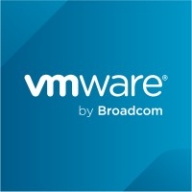

VMware Aria Operations and VMWare Tanzu CloudHealth compete in virtual environment management and cost management for multi-cloud environments. Based on available data, VMware Aria Operations appears to have an advantage in monitoring and analytics, while VMWare Tanzu CloudHealth excels in cost management and visibility.
Features: VMware Aria Operations provides comprehensive monitoring for virtual environments with features like real-time analytics, dynamic thresholds, and predictive analytics. In contrast, VMWare Tanzu CloudHealth is strong in cost management and multi-cloud visibility, offering detailed financial analytics and cost-saving projections.
Room for Improvement: VMware Aria Operations users would benefit from enhanced reporting capabilities, easier dashboard customization, and better multi-tenancy support. Users also desire improved integration with third-party tools and expanded automation features. Meanwhile, VMWare Tanzu CloudHealth requires better performance accuracy and more flexible pricing, along with improved predictive analytics and visualization features similar to competitors.
Ease of Deployment and Customer Service: VMware Aria Operations is adaptable, often deployed on-premises or in hybrid settings, with reliable technical support, although users report occasional service delays. VMWare Tanzu CloudHealth is primarily used in public cloud environments and offers responsive customer service, though technical escalation processes could be more efficient.
Pricing and ROI: VMware Aria Operations might be seen as expensive at higher tiers; bundling within larger VMware environments could reduce costs. Conversely, VMWare Tanzu CloudHealth uses a cost-effective subscription model, praised for operational cost savings through optimized cloud expense management. Both products enhance ROI by reducing resource allocation waste, addressing specific enterprise needs.
| Product | Market Share (%) |
|---|---|
| VMware Aria Operations | 6.7% |
| VMWare Tanzu CloudHealth | 1.9% |
| Other | 91.4% |


| Company Size | Count |
|---|---|
| Small Business | 62 |
| Midsize Enterprise | 62 |
| Large Enterprise | 278 |
| Company Size | Count |
|---|---|
| Small Business | 4 |
| Midsize Enterprise | 2 |
| Large Enterprise | 4 |
VMware Aria Operations is a high-ranking virtualization management and cloud management tool that automates and simplifies IT management to the applications it supports. It achieves this through full-stack visibility from physical, virtual, and cloud infrastructure. The product allows users to enable self-driving IT operations management across private, hybrid, and multi-cloud environments. This is conducted with the unified operations platform that delivers continuous performance, capacity and cost optimization, and integrated compliance through artificial intelligence (AI) and machine learning (ML), and predictive analytics.
VMware Aria Operations Use Cases
VMware Aria Operations has several use cases, some of which include:
VMware Aria Operations Features
The product has various features which users can utilize. Several of the features that the 2022 version of VMware Aria Operations introduced include:
VMware Aria Operations Benefits
VMware Aria Operations brings various benefits to the organizations using it. Among them are the following:
Reviews from Real Users
Mohamed N., a tech lead VMware support engineer at a tech services company, appreciates VMware Aria Operations because it is easy to use, stable, and support is always available.
Mojtaba K., a senior system administrator at a comms service provider, values VMware Aria Operations due to the fact that its dashboards give you a glimpse of what is really going on in your virtualized environment.
VMware Tanzu CloudHealth, formerly known as VMware Aria Cost Powered by CloudHealth, is a specialized cloud management platform tailored for Multi-Cloud Cost Optimization. It offers comprehensive visibility into cloud spending across various providers, enabling users to identify areas for optimization and make informed resource allocation decisions. With features like reserved instance management, resource rightsizing, and automated cost governance policies, it facilitates financial management for optimal cost efficiency. Beyond cost optimization, Tanzu CloudHealth enhances cloud operations through workload optimization and governance automation, catering to multi-cloud environments encompassing public, private, and hybrid clouds. Its primary focus remains on enabling organizations to effectively manage and reduce cloud expenditures while supporting operations across diverse cloud platforms.
We monitor all Cloud Management reviews to prevent fraudulent reviews and keep review quality high. We do not post reviews by company employees or direct competitors. We validate each review for authenticity via cross-reference with LinkedIn, and personal follow-up with the reviewer when necessary.